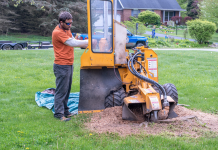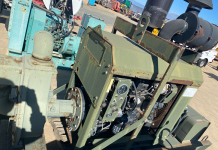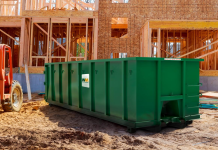Today, we live a lifestyle that allows us to use several products that makes our lives more comfortable. However, this comes at a cost of creating byproducts like wastewater.
We create wastewater by using water which comes down the shower and goes into the sewers. Due to this, this type of water is unsuitable for consumption or use.
Fortunately, there are several innovative and effective ways to treat wastewater by using treatment technologies. These technologies help filter the wastewater and make it free from dangerous chemicals and bacteria.
This treatment involves using revolutionary machines like Secoh air pumps to make the process more effective.
However, most people are unaware of the different water treatment processes available to them. Therefore, today we bring you this article to discuss some of the
Let’s get started!
1. Physical Wastewater Treatment
As the name suggests, this treatment method uses physical methods like screening and skimming to remove solid waste. This helps to get rid of any unnecessary physical matter from the water without using any chemicals.
One of the key methods for physical wastewater treatment involves sedimentation. In this process, you get rid of insoluble particles in the wastewater and separate them from pure water.
Another method includes circulating air into the wastewater to add more oxygen to it. This is called aeration and it’s used to kill all the bacteria in the sewage water.
Lastly, filtration is used to separate the water from the contaminants. This involves the usage of special filters to collect the grease or dirt and remove them later on in the process.
2. Biological Wastewater Treatment
This process involves using biological methods to break down any organic matter in the water like oils, waste, or food. This form of treatment uses microorganisms to treat the organic matter in the wastewater.
This method can be divided into three parts: aerobic processes, anaerobic processes, and compositing. In the aerobic process, oxygen is used to deliver bacteria to decompose the organic matter. This matter turns into carbon dioxide which can be used by plants.
On the other hand, anaerobic processes use fermentation at a particular temperature to treat the waste. This process doesn’t involve using oxygen.
Finally, composting involves the treatment of wastewater through mixing materials like sawdust or other carbon sources to kill the bacteria. This process removes most solids present in the water, however, some elements like nitrogen and phosphorus may still live.
3. Chemical Wastewater Treatment
This treatment involves the use of safe chemicals which are put into the water to kill any dangerous bacteria. This process involves the use of Chlorine, an oxidising chemical, which decomposes water to remove any contaminants.
Another oxidising chemical used to treat sewage water is ozone. These agents help in the process of neutralisation. In other words, adding these chemicals to the wastewater brings the liquid back to its natural state of pH 7.
This makes the water safe to use and consume while also preventing the bacteria from reproducing in the water, keeping it pure.
4. Sludge Wastewater Treatment
Sludge treatment involves the separation of solid and liquids where the least amount of moisture is required during the solid phase. Likewise, the lowest amount of solid particles is needed to separate the liquid later in the process.
One example of sludge treatment involves getting rid of the waste from industrial wastewater or sewage plant. This produces residual moisture in solids, which determines the disposal costs and the centrate quality decides the pollution load going back to the factory.
This process helps minimise both and is an effective way to treat wastewater in sewage treatment plants.
To Sum Up
Wastewater has a massive impact on nature and is crucial to treat it properly. This helps us to gain access to more water and avoid sewage waste. Additionally, it helps to save creatures that need fresh water and thus, indirectly protects the planet as a whole.
To make sure your wastewater is treated well, you need to take a good look at your sewage treatment plant. If there are any issues, you should solve them immediately by purchasing the proper equipment and spare parts to keep it running.




